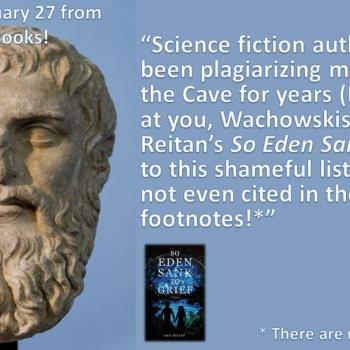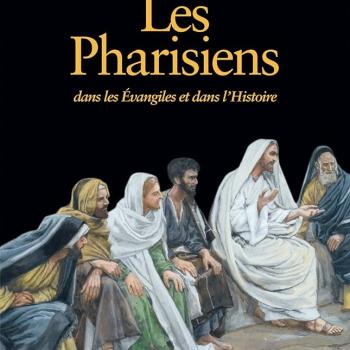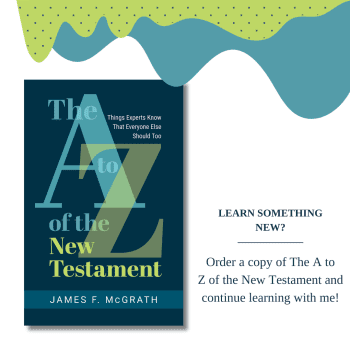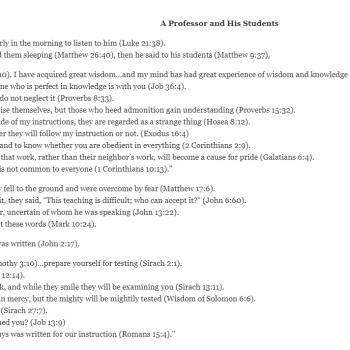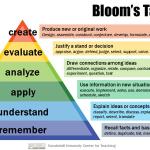I’m delighted that St. Martin’s Press sent me an advance reading copy of Joel M. Hoffman’s book The Bible’s Cutting Room Floor: The Holy Scriptures Missing From Your Bible
. The book is due out September 2nd, and will be of interest to many readers of this blog. It can be pre-ordered on Amazon in both hardback and Kindle formats.
The title is a clever one (and may remind you of this Non Sequitur cartoon). But it does need to be clarified from the outset that Hoffman takes a broad approach to things that are “missing” or “left out” from today’s Bibles. Some of the works he considers were never, as far as we know, considered for inclusion in a canon of Scripture – for instance, the works of Josephus. In other cases, the material in question, such as the distinctive content in the Septuagint, made it into “Bibles” – just not ones that most modern readers of the Bible in English are aware of, much less likely to read.
And so the book is really an introduction to a range of things that the Bible omits – from details of its own historical contexts, to scribal variants in manuscripts, to other literature such as the Dead Sea Scrolls and the works typically lumped together under the heading of “pseudepigrapha.”
There are a lot of books which introduce and/or translate this literature, and Hoffman provides an appendix with such scholarly treatises and editions at the back of the book. But there are very few such books which are truly aimed at a general audience. And that is precisely the gap which Hoffman seeks to fill in this book.
Like any book aimed at a general audience, there are details in it about which scholars will raise legitimate qualms – one that comes immediately to mind is the treatment of “Hellenism,” which doesn’t reflect the advances in scholarship since Martin Hengel’s classic treatise on the subject was published almost half a century ago.
But the way Hoffman presents the literature, the analogies used and comical asides, make up for such shortcomings. Let me share a few of my favorite such details in the book here. For instance, Hoffman writes about the story of the discovery of the Dead Sea Scrolls (p.45):
As a novel or summer movie, this story would be so patently ridiculous and so obviously full of contrivances that no one would take is seriously. It has unlikely coincidences, like the scrolls from Qumran being translated by a Mr. Qimron. It has enigmatic sensationalistic elements, like a treasure map that otherwise has no place in the main story. It has unbelievable plot twists, like animals that lead people to hidden wonders. And it has cliché villains (like the researcher who told the world that Judaism was a horrible religion) who battle cliché heroes (like the archaeologist who took time off work to literally save his nation from destruction. In fact, the only thing saving the otherwise absurd tale is the bizarre fact that it happens to be true and well documented.
Other amusing or insightful highlights include the depiction of Psalms as a “greatest hits” collection, and the analogy between the Bible and a museum, in which additional components of the collection, instead of merely ceasing to be featured on display, have been completely forgotten about (p.258). That analogy sums up the author’s purpose in writing: “What started as an entranceway to to the complete collection ended up as the collection itself” (p.259).
Hoffman’s wit comes through in many more places than I can mention here – such as when he talks about the translation of “Wonder Woman” as eshet chayil when it first aired in Israel, and the surprise ultra-Orthodox male viewers had finding it featured a woman running around in her underwear (p.106); or when he says things such as that humans “never observe two animals just sitting around chewing the fat, except in the most literal of senses” (p.191).
Hoffman has created a website, TheUnabridgedBible.com, to accompany the book.
The book focuses on texts omitted from the Jewish Bible and Christian Old Testament, although it makes regular reference to the New Testament and Christianity as appropriate. Those interested in works of the same sort which were omitted from the Christian Bible will want to follow Tony Burke’s series on Christian apocrypha.
If you are a layperson who has never dived into works like the Book of Enoch or the Life of Adam and Eve, or you are a professor looking for fresh ideas and illustrations when teaching about such extracanonical works, you’ll find much that is of interest in Joel Hoffman’s book, The Bible’s Cutting Room Floor: The Holy Scriptures Missing From Your Bible.








